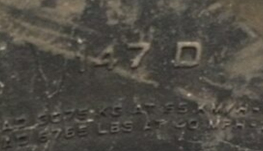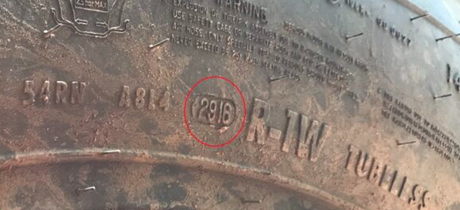
Your tractor tyres have a range of useful information, which having a better understanding of can help you obtain better productivity. Below is a summary of some of the most important markings:
Understand your tyre markings better to make the right choice when replacing a tyre
Every tractor tyre has markings on its sidewall which specify its characteristics. The capacity of your agricultural vehicle can be increased by altering the tyres dimensions or characteristics (better traction, increased speed, increased load capacity, improved safety, and comfort). To do this, you must understand the different markings on the sidewalls of your tyres.
To facilitate and standardise agricultural tyre dimensions, ETRTO (European Tyre and Rim Technical Organisation) standards have been in place for many years and followed by all leading tyre manufacturers. Here is an explanation of useful ETRTO markings.
HOW TO READ TYRE LOAD AND SPEED INDEXES
The Load Index
This is most important because it tells you the maximum load that your tyres can carry at a given speed. This index is represented by a number, corresponding to a precise load, which you can consult in the correspondence tables supplied by the manufacturer.
The Speed Index
The speed index is linked to the load index, as it indicates the maximum speed at which the tyre can be used when loaded. It is mentioned by letters from A2 (10 km/h) to G (90 km/h) and reflects the maximum speed at which the agricultural tyre can be used. Many radial tractor tyres have either an A8 (40km/h) or increasingly D (65km/h) index ratings.
Example 147D: 3,075kg @65km/h
Duals Don’t Double Your Capacity!
For example, a rear axle of a tractor is fitted with 480/80R46 dual tyres that have a load and speed rating of 158A8. This would imply that each tyre is rated to carry 4,250kg at a maximum speed of 40km/h. So, with four tyres, that axle is rated to carry 17,000kg, right?? Not quite, duals increase the load carrying capacity of a tyre setup by only 1.76 times; not doubling your capacity. Using this example, the rear axle with four 480/80R46 tyres will actually be rated to carry 14,960kg, not 17,000kg.
The Date of Manufacture (DOM)
The date of production is indicated beginning with the week, followed by the last two numbers indicating the year.
For example: 2918: 29th week of 2018

Unique to the tyre manufacturer there will also be other markings associated with this DOM, which will indicate the origin and factory.
Tubeless
When “Tubeless” is marked on your tyre, this means the tyre is constructed to be used without the need of a tube fitted.
Below is some further technical information that you may also find useful when reviewing a tyre technical manual:
What is the section width?
This is the measurement of the width of the tyre, measured from the interior sidewall to the exterior sidewall – not just the tyres tread.
What is the overall diameter?
This is the diameter of the inflated tyre with no load (unladen).
What is the static loaded radius?
This is the radius from the wheel centre down to the ground, at reference pressure and load. It will be different from the normal radius because the tyre deforms into the ground. The difference between unloaded radius and static loaded radius is called deflection.
What is the rolling circumference?
This is the distance your tyres will travel in one revolution. This dimension is essential when considering MFWD leads and ratios. The dynamic rolling circumference is approximately calculated by adding the unloaded radius and the static loaded radius and multiplying the result by 3.1416.
What is permitted rim sizes?
This is the recommended rim width sizes approved by the tyre manufacturer for their product. Often this can include multiple rim sizes and designs i.e. W15, DW16, W16
With almost 50 years’ experience, at TRS Tyre & Wheel our expert team are available to help you with any technical question or inquiry you may have.